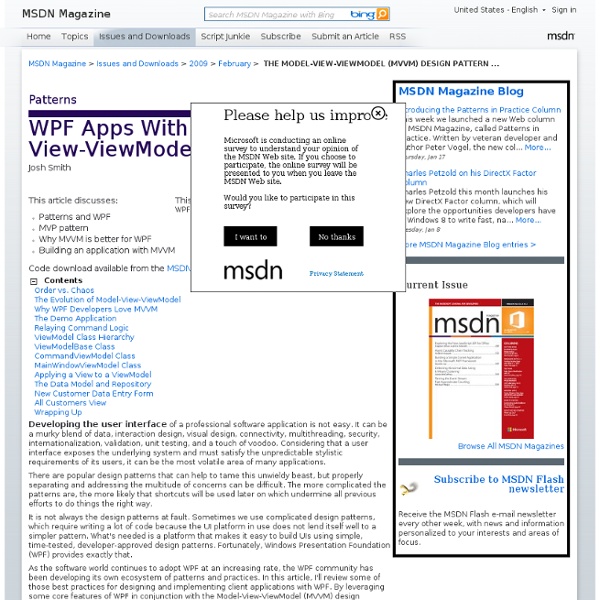LE MOTIF Model-View-ViewModel DESIGN (MVVM) pour WPF

MVVM for Dummies
I think that I have found one of the best articles on MVVM that I have ever read: This article sums up what is in MVVM and what is outside of MVVM. Note, when I and most other people say MVVM, they really mean MVVM, Commanding, Dependency Injection + any other Patterns you need to create your application. In WPF a lot of use is made of the Decorator and Behaviour pattern as well. C# – Ideal public partial class IdealView : UserControl { public IdealView() { InitializeComponent(); } } Figure: This is the ideal code behind for a Control / Window / Page when using MVVM. C# – Compromise, but works public partial class IdealView : UserControl { public IdealView() { InitializeComponent(); this.DataContext = new IdealViewModel(); } } Figure: This is a compromise, but the best you can do without Dependency Injection VB.NET – Ideal VB.NET – Compromise, but works
WPF Tutorial
Related:



